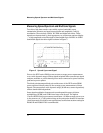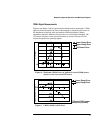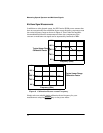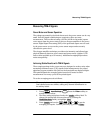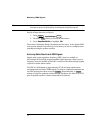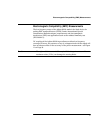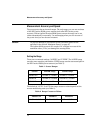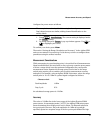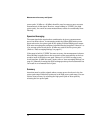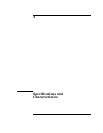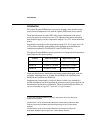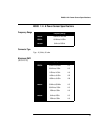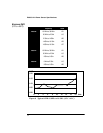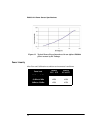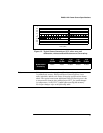
Measurement Accuracy and Speed
30
power path (-10 dBm to +20 dBm) should be used to ensure a more accurate
measurement of this signal. However, range holding in “UPPER” (the high
power path), for a more accurate measurement, results in considerably more
filtering.
Speed and Averaging
The same signal also requires that consideration is given to measurement
speed. As shown above, in autoranging mode the Agilent EPM series power
meter selects the low power path in the Agilent E-series E9300 power sensor.
With auto-averaging also configured, minimal filtering is applied. Values of 1 to
4 for average power levels above -20 dBm are used in the low power path.
(Refer to “Auto-averaging Settings” on page 21.)
If the range is held in “UPPER” for more accuracy, the measurement is slower.
More filtering is applied due to the increase in noise susceptibility at the less
sensitive area of the high power path. Values of 1 to 128 for average power
levels less than -10 dBm are used. (Again, refer to “Auto-averaging Settings” on
page 21.) Manually lowering the filter settings speeds up the measurement but
can result in an unwanted level of jitter.
Summary
Attention must be paid to signals whose average power levels are in the low
power path range whilst their peaks are in the high power path range. You can
achieve best accuracy by selecting the high power path or best speed by
selecting the low power path.



